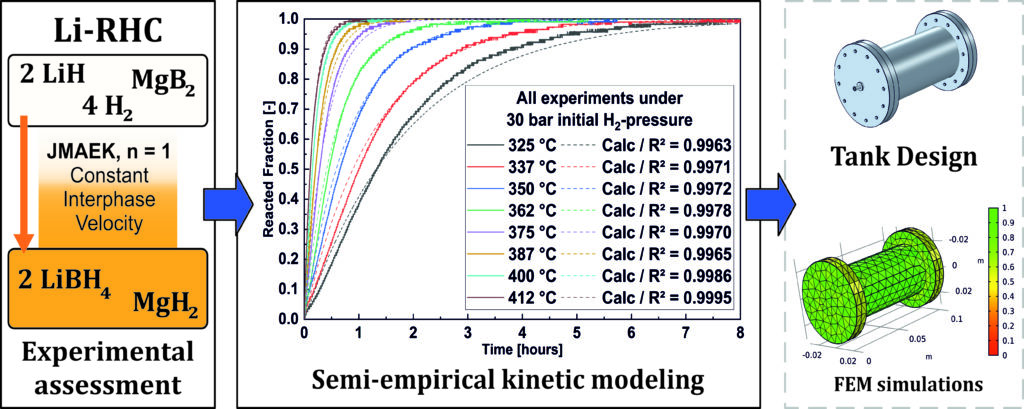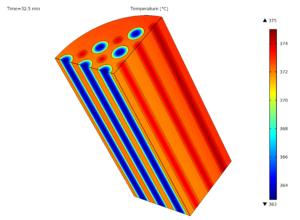

Highly efficient adiabatic hydrogen storage (Adiabatic Tank)
In addition to the energy transition, a significant transition in the transport sector (mobility transition) will be necessary for Germany to comply with the national CO2 targets of the German government and to achieve a sustainable energy supply in the long term run. In addition to pure battery vehicles, vehicles based on fuel cell systems can also contribute to reaching this goal. The vehicles available to date mainly use pressurized hydrogen storage tanks with up to 700 bar pressures. However, even higher storage densities are needed, especially for commercial vehicles, buses, or rail vehicles. One possibility is hydrogen storage in solids, which can offer a safe and compact storage solution through a chemical reaction. Previous studies focused on materials working at room temperature but showed exceptionally low storage densities concerning their weight.
In the Adiabatic Tank project, a new type of storage material with a storage density almost 10 times higher than these so-called room-temperature hydrides is being investigated. This material, which operates at higher temperatures, is combined with a thermo-chemical heat storage material in a joint tank. This material facilitates heat management for safe loading and unloading of the tank with hydrogen. Thus considering the entire tank system, a highly efficient adiabatic hydrogen storage system is created. One focus of the project is the material development for a suitable hydrogen and heat storage material pair. Another focus rests on the engineering design and combination of these two materials into an adiabatic system to realize a highly efficient hydrogen storage system. The work includes both experimental investigations and a large proportion of modeling and simulation of the tank system.
Duration: 04/2018 – 12/2022
Funded by:
Project partners:
Contact:
Letzte Änderung: 26. July 2022

